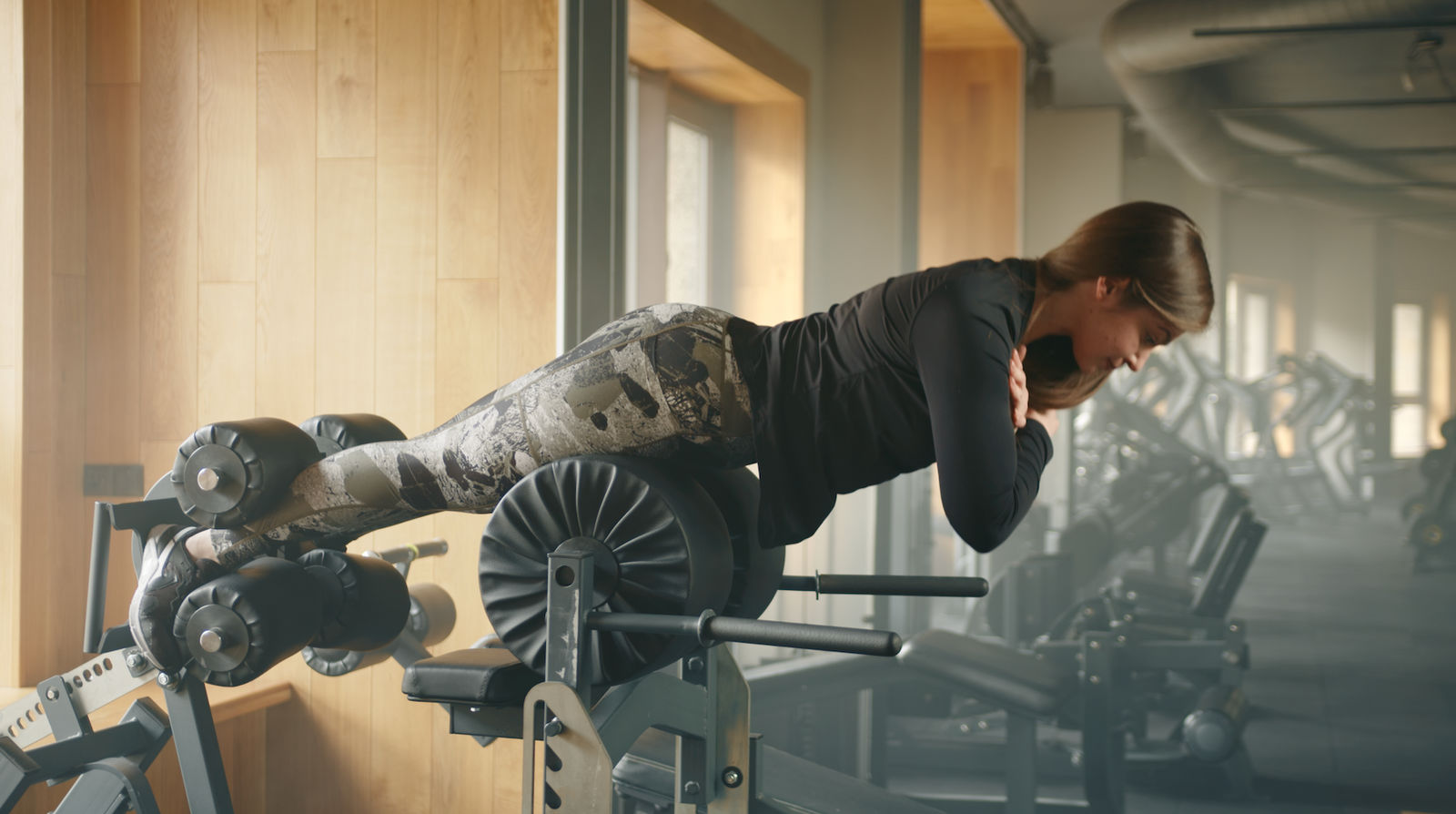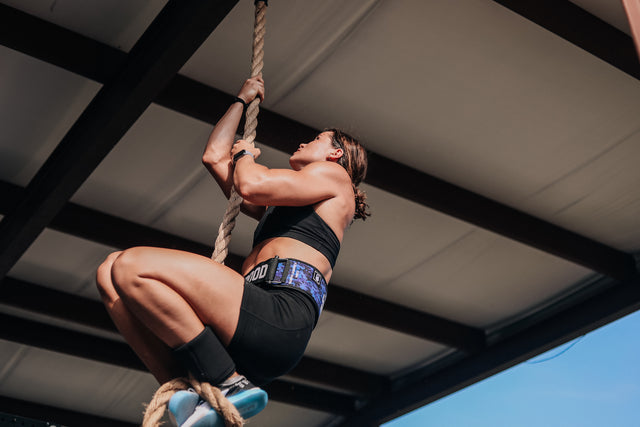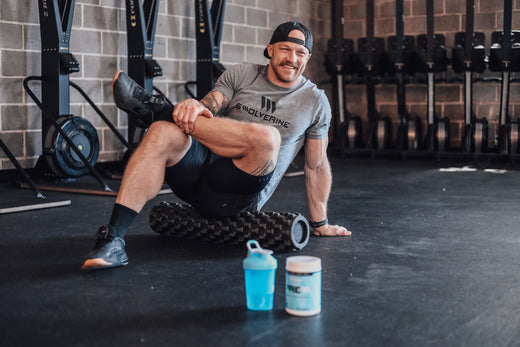When you walk into the gym the glute ham raise machine is rarely your first choice on leg day. Cranking out a drop-set of deadlifts, leg curls, or getting under the squat rack, is going to help you build bigger legs, more strength, and improve muscular endurance. Although it’s not as popular as bigger compound lifts, when it comes to accessory training exercises, that effectively isolate your glutes, the glute-ham raise can be a valuable addition for your backside. Let’s dig into the details and discuss more about what the glute ham raise is, how to do it, what muscles it works, and when to incorporate it into your training program.
What Is The Glute-Ham Raise (GHR)
Aptly named, the glute-ham raise effectively isolates and contracts your glutes and hamstrings, as well as several secondary and tertiary muscles in your back as well as your entire posterior chain.
Posterior-chain exercises involve the contraction and lengthening of the muscles on the back side of your body, in a chain-like motion.
GHR is also an eccentric exercise. Eccentric exercises also referred to as “negatives” are slow, lengthening exercises, that contract a specific muscle.
Eccentric exercises greatly contribute to building more muscle mass and strength. Glute ham raise also benefits better overall athletic performance, by enhancing explosiveness and power in the hips, contributing to better running form better, stronger lifts, and producing more power in compound lifts, such as the deadlift, squat, and clean.
Glute-Ham Raise Muscles Worked
Glute ham raise involves every muscle in your posterior chain, which includes your glutes, hamstrings, calves, lower and upper back.
GHR activates several muscles groups at the same time, which can build and improve functional strength, mobility, and protect your body from injury. Stimulating the posterior chain also includes strengthening of secondary muscles improving mobility, posture, and flexibility.
The main muscle group focus of the glute-ham raise, are the hamstrings. The hamstrings, balance your body, as you lower yourself, from starting position, creating a shifting tension and resistance, recruiting your glutes, to your lower back and upper back, as your center of gravity shifts through the negative movement pattern. Your spinal erectors, or erector spinae muscles which travel all the way up your back from your pelvis, work to brace and protect your spine during the entire movement. Your core is also recruited controlling your bodies motion and improving core stability.
Your glutes encompass three muscles the gluteus maximus, minimus, and medius. The glute medius (med for short), and the upper glute max, are the specific areas that are responsible for the “shelf” appearance within your physique, when working on the upper glutes.
The gluteus medius sits at the posterior, or upper backside of your hip, and lies underneath the glute max. The gluteus medius has two primary functions, helping stabilize the lower body and hip rotation from the hip joint, specifically the internal rotation of the thigh and abduction.
Your hamstring muscles are located in the back of the thigh, starting at your hip and inserting to the knee. Your hamstrings are also comprised of three muscles, including the biceps femoris, semimembranosus, and the semitendinosus. Your hamstrings are responsible for a variety of functions, bending the knee joint, while also extending and rotating the hip joint.
Your hamstrings cross two major joints – the hip and the knee, making them more complex than other muscle groups. Together these muscles work to bend your knees, extend the hips, and tilt your pelvis posteriorly. Hamstrings are one of the most commonly injured muscles in sports performance, therefore stretching and strengthening your hamstrings can help prevent injuries. Some of the most common injuries are strains, tears, and contusions. These injuries often range from mild to severe, characterized by pain, inflammation, swelling, and restricted range of motion. Therefore, by adding effective hamstring exercises to your training program, you can help achieve better functional movement and prevent yourself from strain or injury.
Your back is composed of several different muscle groups, including the latissimus dorsi (lats), trapezius (traps), Levator scapulae (scaps), rhomboid minor, and rhomboid major.
Generally, your back is divided into three groups; superficial, intermediate, and deep muscles also known as intrinsic muscles.
Your lower back is comprised of two main muscles, the erector spinae and transversospinales, which collectively make part of your core. The erector spinae, which helps keep the spine erect and provides functionality for rotation, is composed of three smaller muscles and tendons, specifically the — iliocostalis, longissimus, and spinalis.
The transversospinales are a group of three muscles covering the lumbar and sacral region of your lower back. They work together to achieve rotation and extension of the vertebral column. These muscles are small and have a poor mechanical advantage for contributing to motion as compared to other dominant back muscles. They include the three semispinalis muscles - rotatores, multifidus, and semispinalis spanning 4-6 vertebral columns.
RELATED ARTICLE The 5 Best Lower Back Exercises
Glute Ham Raise Benefits
Hip Mobility And Range Of Motion
Hip mobility is very important especially in compound movements, Olympic weightlifting, and functional fitness training. Without proper hip mobility, your range of motion can be severely limited, leading to suboptimal outcomes in muscle hypertrophy and strength gains. The glute ham raise can help improve hip mobility improving overall range motion and athletic performance in heavier lifts.
Core Stability
One major benefit of the glute ham raise is core stability and strength. Your core is engaged throughout the entirety of the movement, contributing to greater functional strength, balance, and coordination.
Glute And Hamstring Strength
The most obvious benefit of the glute ham raise - glute and hamstring strength. Very few movements can strengthen or mimic the movement pattern of the GHR, with significant isolation without touching a barbell. Barbell compound movements, such as the squat or deadlift have a heavier loading mechanism as compared to the GHR. This can also give your body a break by simply using bodyweight as opposed to a plate loaded barbell or weights.
How to Glute Ham Raise
The glute ham bench looks very similar to a back extension machine, yet the movement pattern itself closely mimics the Nordic Curl. It's also done on a GHD machine (glute-ham developer), and similar to the GHD movement, however, as opposed to being in the supine position, as a concentric movement, you are in the prone position in an eccentric movement.
The glute ham machine has an adjustable hip pad, ankle and foot pads, as well as a foot plate. An important feature is a large foot plate, so your feet and toes can drive into the plate for maximum leverage and tension to impact your posterior chain.
Your knees should be positioned slightly below the hip pad, with the entire pad at a slight forward tilt.
Your focus should be on the hamstrings and the glutes. Stabilizing your core is very crucial to effectively isolate these muscles. With a stable core, you can stabilize your pelvis, squeezing your hamstrings and glutes.
- After you position your glute ham machine.
- Place your feet flat against the back foot plate.
- Sitting erect with your knees slightly below the hip pad, engage your core.
- With your core stabilized and braced, lower yourself until your chest is parallel to the floor.
- Squeezing your glutes and hamstrings, push yourself back up with your core right throughout the movement.
- Great job, you’ve completed one rep.
The glute ham raise can significantly improve and develop your glute and hamstring strength and hypertrophy. Additionally, the GHR can help improve overall functional strength and movement, to further enhance heavier compound lifts and core stability and strength. Adding this exercise to your accessory training days will significantly benefit your training and performance.
Need Help With Optimizing Your Diet, Nutrition, And Training Plan To Finally Get The Results You've Been Waiting For?
SWOLVERINE IS AN ENDURANCE ATHLETE AND ACTIVE LIFESTYLE BRAND. MADE FOR THE ELITE ATHLETE, AND THE STRONG-WILLED OUR PRODUCTS WERE DESIGNED TO FUEL YOUR ATHLETIC PERFORMANCE. WE PERFORM WHEN YOU PERFORM.
We believe that everyone can optimize not only their athletic performance but their human potential. The way we believe we can optimize performance is through transparency, clinically effective doses, and clinically proven ingredients with evidence-based outcomes. We provide the nutrients you need to power your active lifestyle.








